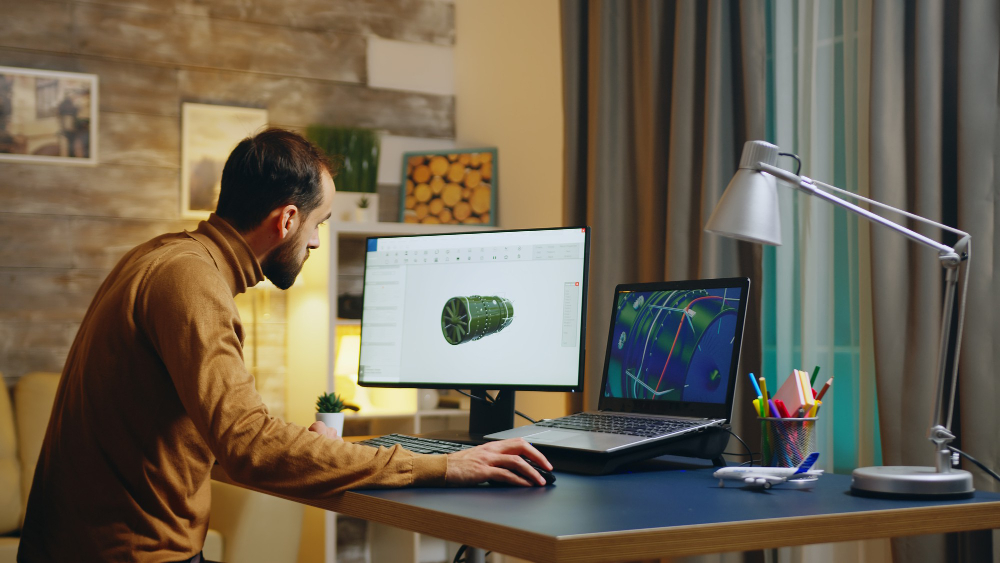
Mosaicking Rasters in QGIS
What is Raster Mosaicking?
Raster mosaicking is the process of combining multiple adjacent or overlapping raster datasets into a single, seamless raster image. This technique is essential when working with satellite imagery, aerial photographs, or any spatial data that spans multiple tiles or scenes. The result is a unified dataset that covers a larger geographic area while maintaining spatial accuracy and visual continuity.
Why Mosaic Rasters?
Mosaicking serves several important purposes in GIS workflows:
- Seamless Coverage: Combines multiple raster tiles into continuous coverage of large study areas
- Analysis Efficiency: Enables analysis across administrative or natural boundaries without data gaps
- Visualization: Creates clean, professional maps without visible tile boundaries
- Data Management: Reduces the number of individual files to manage
- Processing Optimization: Simplifies workflows by working with single datasets instead of multiple files
Understanding Raster Mosaicking Concepts
Overlap Handling
When rasters overlap, QGIS must decide which pixel values to use in overlapping areas. Common strategies include:
- Using the first/last raster in the processing order
- Averaging overlapping pixel values
- Taking maximum or minimum values
- Using more sophisticated blending algorithms
Resampling Methods
When input rasters have different pixel sizes or are not perfectly aligned, resampling occurs:
- Nearest Neighbor: Best for categorical data, preserves original values
- Bilinear: Good for continuous data, creates smooth transitions
- Cubic: Highest quality for continuous data but computationally intensive
Coordinate Systems
All input rasters should ideally be in the same coordinate reference system (CRS). QGIS can reproject on-the-fly, but pre-processing ensures optimal results.
Methods for Mosaicking in QGIS
Method 1: Build Virtual Raster (VRT)
The Virtual Raster approach creates a lightweight file that references multiple rasters without actually merging the data.
Advantages:
- Fast processing with no data duplication
- Maintains original data quality
- Easy to modify by adding or removing source rasters
- Minimal disk space usage
When to Use:
- Temporary mosaics for visualization
- When source rasters may change frequently
- Limited storage space scenarios
- Quick analysis workflows
Steps:
- Navigate to Raster → Miscellaneous → Build Virtual Raster
- Add input raster layers using the “…” button
- Configure resolution handling (use highest/lowest/average/user-defined)
- Set the coordinate reference system
- Choose pixel data type if needed
- Specify output file location (.vrt extension)
- Click “Run” to create the virtual mosaic
Method 2: Merge Tool
The Merge tool physically combines rasters into a single output file, offering more control over the mosaicking process.
Advantages:
- Creates a true merged raster file
- Better performance for repeated access
- More control over output parameters
- Handles different data types effectively
When to Use:
- Final products for distribution
- Intensive analysis workflows
- When working offline or with limited network access
- Publishing web services
Steps:
- Go to Raster → Miscellaneous → Merge
- Select input rasters using the folder or individual file options
- Set the output data type (keep original or specify)
- Configure “No Data” value handling
- Choose pixel size and extent options
- Select output format (GeoTIFF recommended for most uses)
- Enable “Create Options” for compression if needed
- Run the tool to create the merged raster
Method 3: GDAL Command Line Tools
For advanced users, GDAL provides powerful command-line utilities accessible through QGIS.
gdal_merge.py Benefits:
- Extensive parameter control
- Batch processing capabilities
- Advanced blending options
- Integration with automated workflows
Basic Syntax Example:
gdal_merge.py -o output_mosaic.tif -of GTiff input1.tif input2.tif input3.tif
Access in QGIS: Use the GDAL algorithms in the Processing Toolbox under “GDAL” for graphical interfaces to these tools.
Step-by-Step Workflow
Preparation Phase
- Data Inventory: Collect all raster files to be mosaicked
- Quality Check: Inspect rasters for gaps, errors, or inconsistencies
- CRS Verification: Ensure all rasters use the same coordinate system
- Resolution Check: Note pixel size differences that may affect output quality
Processing Phase
- Load Data: Add all source rasters to your QGIS project
- Visual Inspection: Check for proper overlap and alignment
- Choose Method: Select VRT for quick visualization or Merge for permanent output
- Configure Parameters: Set appropriate options based on your data and requirements
- Execute Process: Run the selected mosaicking tool
- Verify Results: Check the output for seamless transitions and data integrity
Post-Processing
- Styling: Apply appropriate symbology to the mosaic
- Metadata: Document the sources, processing date, and parameters used
- Quality Assurance: Verify pixel values and spatial accuracy
- Export: Save in appropriate formats for intended use
Best Practices and Tips
Data Preparation
- Standardize all input rasters to the same CRS before mosaicking
- Ensure consistent pixel sizes when possible
- Remove or mask poor-quality areas in source rasters
- Consider radiometric calibration for imagery from different sensors or dates
Parameter Selection
- Use “Nearest Neighbor” resampling for classified or categorical rasters
- Apply “Bilinear” or “Cubic” resampling for continuous data like elevation models
- Set appropriate “No Data” values to handle gaps properly
- Consider compression options for large outputs to save storage space
Performance Optimization
- Process smaller geographic extents when possible
- Use VRT for exploratory analysis, then create permanent mosaics as needed
- Enable multi-threading in QGIS processing options for faster execution
- Monitor system resources during large mosaicking operations
Quality Control
- Always inspect overlap areas for seamless transitions
- Check coordinate system consistency in the final output
- Validate pixel value ranges and statistics
- Create backup copies of original data before processing
Common Challenges and Solutions
Challenge: Color Differences Between Tiles
Solution: Apply histogram matching or color correction before mosaicking, or use advanced blending algorithms available in specialized software.
Challenge: Different Pixel Sizes
Solution: Resample all inputs to a common pixel size using the Warp tool before mosaicking, or specify target resolution in merge parameters.
Challenge: Memory Limitations
Solution: Process in smaller sections, increase virtual memory allocation, or use VRT files for large datasets.
Challenge: Projection Mismatches
Solution: Reproject all layers to a common CRS using the Warp tool, choosing an appropriate projection for your study area.
Challenge: Edge Artifacts
Solution: Use feathering or blending options if available, or manually edit problem areas using raster calculator tools.
Advanced Techniques
Weighted Mosaicking
For overlapping areas, assign weights based on distance from raster edges or data quality metrics to create more natural transitions.
Temporal Mosaicking
When combining imagery from different dates, consider seasonal effects and use consistent acquisition parameters when possible.
Multi-band Considerations
Ensure all input rasters have consistent band structures and handle multi-spectral data appropriately for your analysis needs.
Mosaicking rasters in QGIS is a fundamental skill that enables comprehensive spatial analysis across large areas. Whether you choose the lightweight VRT approach for quick visualization or the robust Merge tool for permanent outputs, understanding the underlying concepts and best practices ensures successful results. Regular practice with different data types and scenarios will build expertise in handling the nuances of raster mosaicking workflows.
The key to successful mosaicking lies in careful preparation, appropriate parameter selection, and thorough quality control of results. With QGIS’s powerful tools and flexible approaches, you can create seamless raster mosaics that serve as the foundation for sophisticated spatial analysis and compelling cartographic products.

